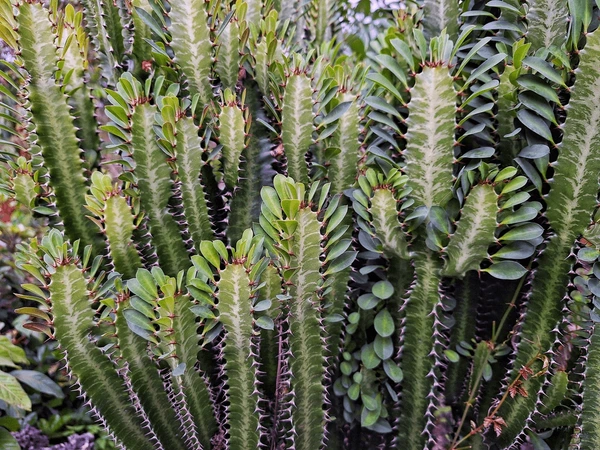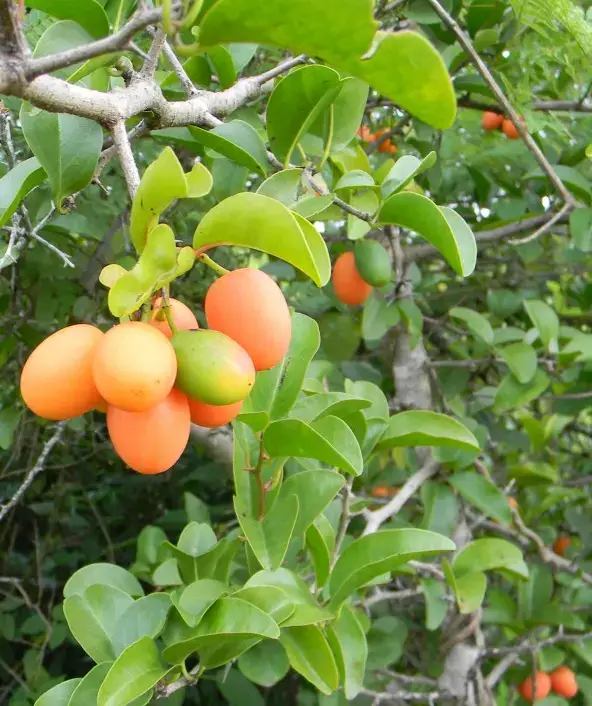
Soil Health & Fertilization
We unite suppliers and green industry professionals worldwide
A Gorgeous Succulent With Spires of Green and Red Drama
By Mariam Scott
|Published on June 04, 2025


“Did you know the African Milk Tree can grow to 6 feet tall indoors — and it stores water in its cactus-like stems to survive droughts?”
The African Milk Tree (Euphorbia trigona) brings a striking and bold succulent into your home or outdoor garden with its tall, distinctive shape. This plant is native to Central Africa and does best dry, sunny conditions. It’s known for its vertical growth, triangular stems, and small, teardrop-shaped leaves. Its red or green hue and carefree nature make it a favorite pick among both seasoned and beginner plant lovers.
Despite its cactus-like appearance, it’s not a cactus at all, but a euphorbia, part of a large plant family that exudes a milky sap when cut. Fast-growing and bold, it might be a focal point in a pot, a modern home accent or a taught feature in dry landscapes.
| Botanical Name | Euphorbia trigona |
| Common Name | African Milk Tree, Cathedral Cactus (misleading), Friendship Cactus |
| Type | Succulent shrub |
| Height | 4 to 9 feet (indoors or out) |
| Light needs | Bright, indirect light to full sun |
| Soil needs | Soil should be well-draining with sandy or cactus mix. |
| Water needs | Low |
| Hardiness Zones | 10–12 (USDA) |
| Bloom Time | Rarely blooms in cultivation |

September 25, 2025
9 minute read
September 24, 2025
9 minute read
September 23, 2025
10 minute read
September 22, 2025
9 minute read


Join as a seller and connect with thousands of B2B buyers nationwide!
Sign Up

Daphne
With glossy green leaves and clusters of small, richly perfumed flowers, daphne gives charm and sophistication to the winter garden when little else is blooming. This shrub can be fussy but can offer years of exquisite beauty and scent to those who pamper

Rattlesnake Plant
The Rattlesnake Plant is a tropical show-stopper that brings the rich, colorful patterns of the jungle into your home. Whether paired with other tropicals or simply left to shine alone, this charismatic foliage plant adds a touch of wild elegance to any i

Ursinia
Ursinia is a delightful genus of daisy-like flowers that are native to southern Africa. It offers a simple way of bringing brilliant seasonal color to native and cottage-style gardens.

Ximenia
Ximenia is a shrubby, spiny survivor with delicate blooms and tart, aromatic fruit. Also called “wild plum” or “sea lemon,” this deciduous shrub is valued for its edible fruit, ecological value and unexpectedly drought hardiness.
African Milk Tree’s a dream for lazy gardeners.It thrives with little water, loves sunlight, and is extremely tolerant of dry conditions. If you’re cultivating it indoors, select a bright location receiving lots of indirect light — think near a south-facing window. Outdoors, plant in containers or well-drained garden beds where frost isn’t a concern.
It grows fast — sometimes a foot a year — and may eventually need support. Careful when handling it: the white sap can irritate skin and is toxic if ingested.
This plant likes bright, indirect light, but can tolerate some direct sun, especially outdoors. Indoors, keep it close to a south- or west-facing window where it can get 6 hours or more of light. Too little light results in stretched, leggy growth. If grown in lower light, rotate the pot regularly to encourage even growth.
Use a well-draining cactus or succulent mix to keep the roots healthy. The African Milk Tree doesn’t like soggy soil, so avoid heavy or moisture retaining substrates. If you are growing plants outdoors, add some coarse sand or perlite to the native soil to improve the drainage. Placing small stones at the bottom of pots can help prevent root rot.
African Milk Tree is extremely drought-resistant. Let it dry out between waterings. Water every 2–3 weeks during spring and summer, or when soil is dry to the touch. Reduce watering in winter — watering once a month or less is generally enough. Water at the base and avoid getting moisture on the stems to prevent rot. The No 1 mistake to avoid is overwatering.
Pruning this succulent maintains its attractive shape. Here's how to do it:
African Milk Tree can be propagated via cuttings easily:
African Milk Tree grows well in containers—perfect for patios or sunny indoor spaces.
African Milk Tree is not a cold-hardy plant. If temperatures drop below 50°F (10°C), bring potted plants indoors or provide shelter. Indoors, put it in the brightest window you can find and reduce watering. It may go semi-dormant, with slowed growth during winter, so hold off on fertilizing until spring.
Although it’s technically a flowering plant, African Milk Tree blooms quite rarely in cultivation. In ideal outdoor conditions, mature plants may produce tiny, yellow-white flowers. However, this does happen on occasion, so consider this a lovely surprise rather than a goal. The true visual interest in the plant is its shape, its height, and its vibrant color.
African Milk Tree is hardy but not immune to issues:
No, it's a succulent from the Euphorbia family. It only looks like a cactus!
Yes — its white sap can irritate the skin and cause discomfort to the eyes. It is toxic to pets and humans if ingested. Handle with gloves.
Under the right conditions, it can grow a foot tall up each year. Indoors, its growth is a bit slower, but still impressive.
Only in frost-free zones (USDA 10–12). In colder climates, it should be grown in containers and overwintered indoors.

Soil Health & Fertilization
Victor Miller

Pest Identification & Prevention
Victor Miller

Lawn Care Tips & Maintenance
Victor Miller

Soil Health & Fertilization
Victor Miller

Smart Irrigation Systems
Victor Miller

Patios, Walkways & Driveways
Victor Miller

Soil Health & Fertilization
Victor Miller

Pest Identification & Prevention
Victor Miller
My Account
Our team is always here to help.
We are open Monday - Friday, 9:00 AM to 4:30 PM PST.